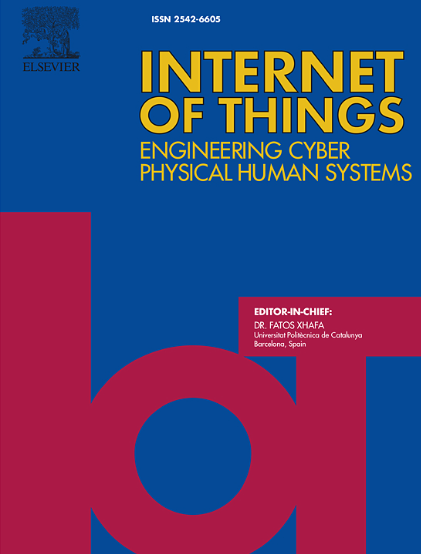Hybrid vehicular access protocol and message prioritization for real-time safety messaging
IF 6
3区 计算机科学
Q1 COMPUTER SCIENCE, INFORMATION SYSTEMS
引用次数: 0
Abstract
Real-time safety services rely on the exchange of messages to enhance the operations of connected and automated vehicles (CAVs). These safety messages convey vital information about traffic conditions, enabling drivers to take necessary measures to prevent accidents. The timely and reliable delivery of these messages is essential, necessitating efficient channel access. Vehicular Deterministic Access (VDA) is employed as a channel access scheme with distinct priorities and stringent timing guidelines, particularly for urgent safety warnings. In this paper, we propose a hybrid approach that combines VDA and Carrier Sense Multiple Access with Collision Avoidance (CSMA/CA) protocols, along with a message prioritization algorithm, to ensure efficient and reliable communication of safety messages in vehicular networks. Our approach leverages the strengths of both VDA and CSMA/CA to avoid message collisions; VDA is more efficient under high traffic loads, while CSMA/CA is better suited for low traffic loads. Additionally, the incorporation of the message prioritization algorithm ensures strict deadline guarantees for high-priority messages, such as Decentralized Environmental Notification Messages (DENMs). We evaluate our proposed solution using the Artery simulation framework. Our results show over a 93% delivery rate for DENM exchanges while maintaining low collision probability across various traffic loads. This research provides practical guidance for the development of efficient and reliable communication systems for CAVs. It also offers a detailed analysis of the trade-offs among different access protocols and message prioritization strategies in vehicular networks.

实时安全信息的混合车辆接入协议和信息优先级排序
实时安全服务依靠信息交换来提高互联和自动驾驶车辆(CAV)的运行。这些安全信息传递有关交通状况的重要信息,使驾驶员能够采取必要措施防止事故发生。及时可靠地传递这些信息至关重要,因此需要高效的信道接入。车载确定性接入(VDA)作为一种信道接入方案,具有明确的优先级和严格的时间准则,尤其适用于紧急安全警告。在本文中,我们提出了一种混合方法,将 VDA 和带碰撞避免功能的载波侦测多路访问(CSMA/CA)协议与信息优先级算法相结合,以确保车载网络中安全信息的高效可靠通信。我们的方法利用了 VDA 和 CSMA/CA 的优势来避免信息碰撞;VDA 在高流量负载下更有效,而 CSMA/CA 则更适合低流量负载。此外,信息优先级算法的加入确保了高优先级信息(如分散环境通知信息 (DENM))的严格截止日期保证。我们使用 Artery 仿真框架对我们提出的解决方案进行了评估。我们的结果表明,DENM 交换的交付率超过 93%,同时在各种流量负载下保持了较低的碰撞概率。这项研究为开发高效可靠的 CAV 通信系统提供了实用指导。它还对车载网络中不同接入协议和信息优先级策略之间的权衡进行了详细分析。
本文章由计算机程序翻译,如有差异,请以英文原文为准。
求助全文
约1分钟内获得全文
求助全文
来源期刊

Internet of Things
Multiple-
CiteScore
3.60
自引率
5.10%
发文量
115
审稿时长
37 days
期刊介绍:
Internet of Things; Engineering Cyber Physical Human Systems is a comprehensive journal encouraging cross collaboration between researchers, engineers and practitioners in the field of IoT & Cyber Physical Human Systems. The journal offers a unique platform to exchange scientific information on the entire breadth of technology, science, and societal applications of the IoT.
The journal will place a high priority on timely publication, and provide a home for high quality.
Furthermore, IOT is interested in publishing topical Special Issues on any aspect of IOT.
 求助内容:
求助内容: 应助结果提醒方式:
应助结果提醒方式:


